
Universidade Fernando Pessoa
Porto, Portugal

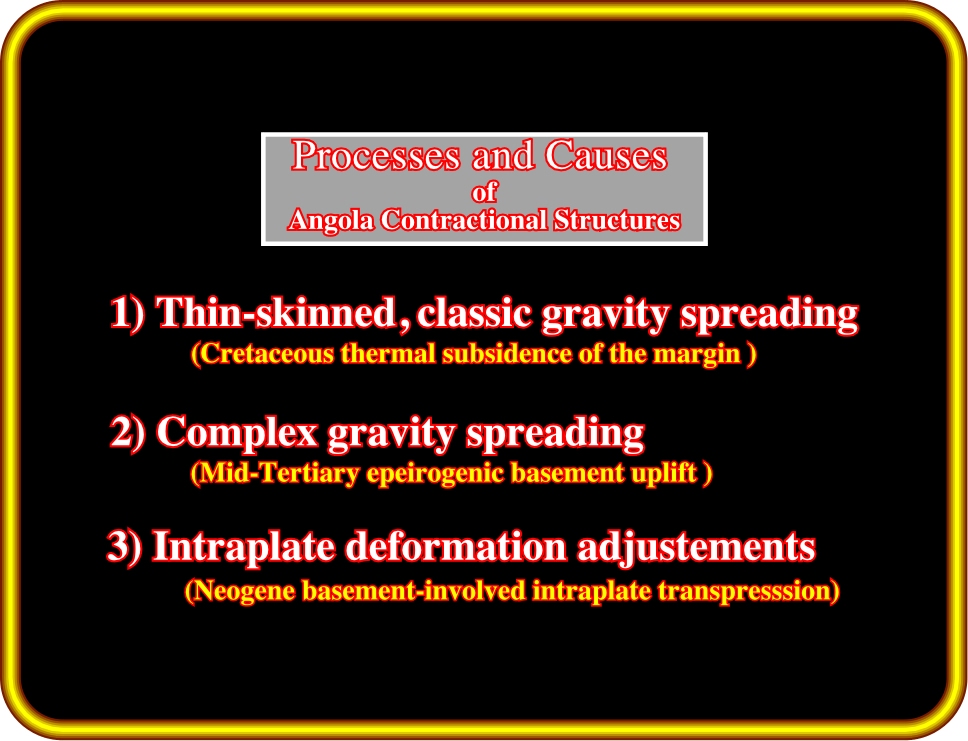
Plate 7- The processes and causes of contraction structures in offshore and onshore Angola can be summarized as follows: 1) Process: Thin-skinned, classic gravity spreading, Cause: Cretaceous thermal subsidence of the margin; 2) Process: Complex gravity spreading, Cause: Mid-Tertiary epeirogenic basement uplift; 3) Process: Intraplate deformation adjustment, Cause: Neogene basement-involved intraplate transpression. Each of the three deformation episodes involved both extension and coeval shortening in the same direction, unlike classic orogenic belts.
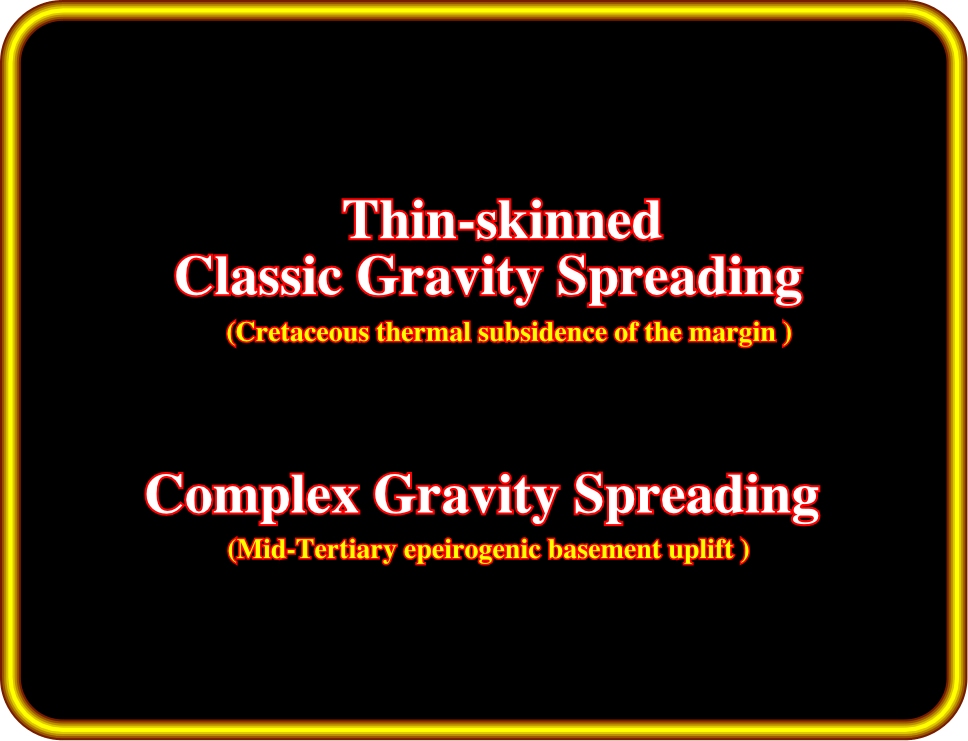
Plate 8- Let’s start by summarizing the evolution of the Angolan margin during the episodes of gravity spreading, which we shall illustrate in three stages.
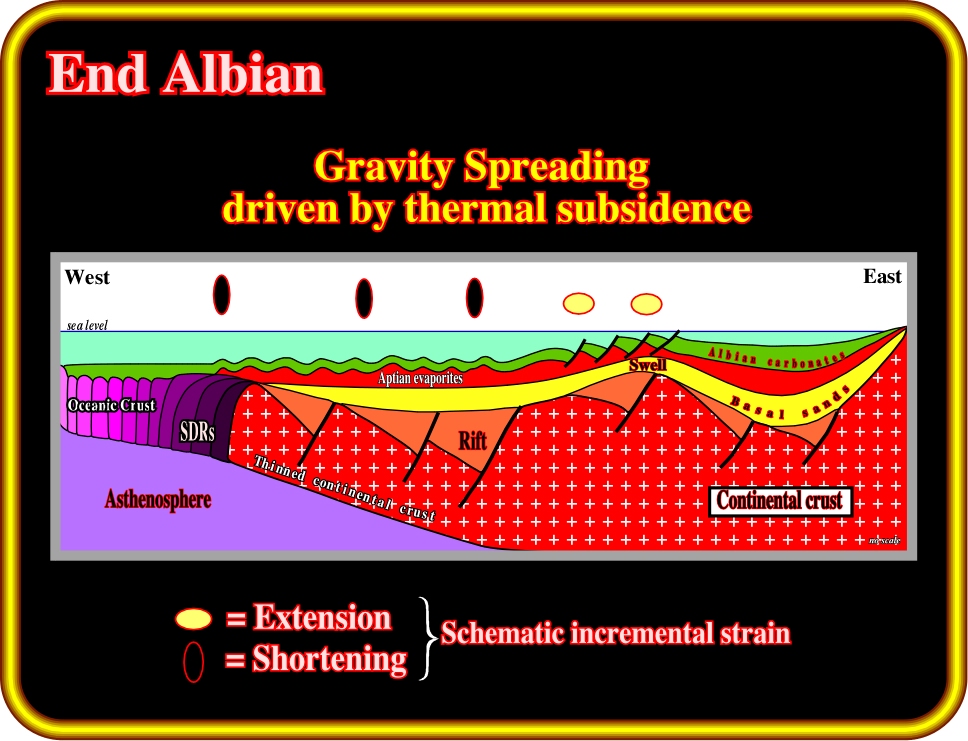
Plate 9- The schematic cross section shows the present onshore and offshore parts of the Kwanza basin separated by a gentle swell. By the end of the Albian, thermal subsidence of the youthful margin would have driven gravity spreading of the offshore part of the basin. An extensional domain over the gentle swell was balanced by a broad fold belt distally. The onshore Kwanza Basin was mostly stable.
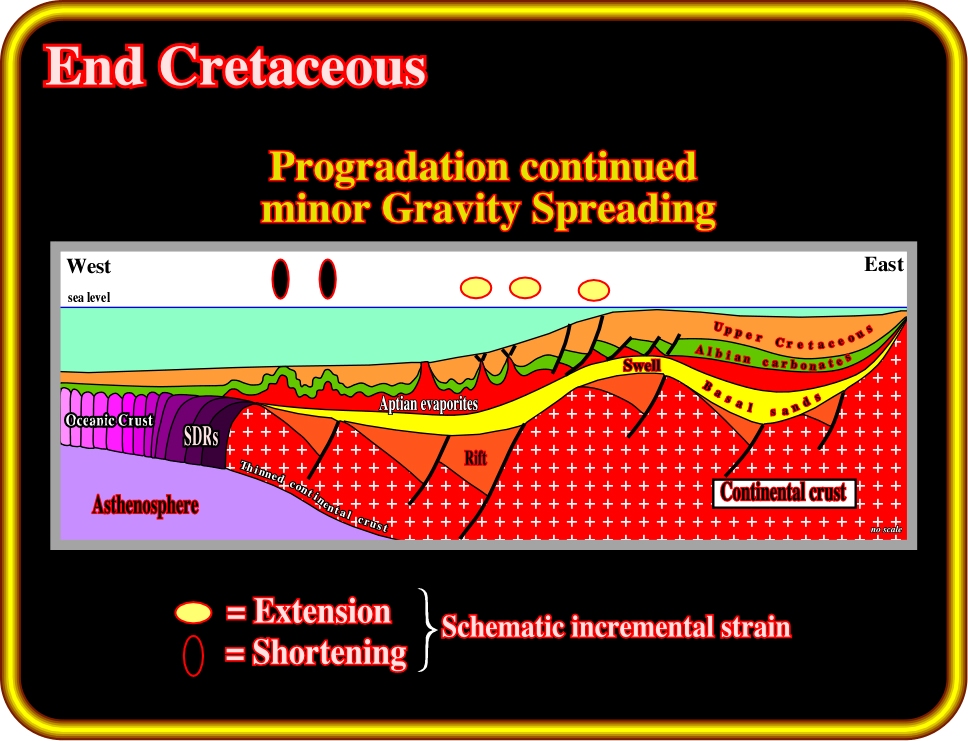
Plate 10- By the end of the Cretaceous, gravity spreading had slowed for two reasons: 1) The rate of thermal subsidence had declined to a negligeable level, 2) The overburden had thickened and strengthened by aggradation. The onshore Kwanza Basin remained stable. The proximal part of the offshore basin underwent minor extension, forming salt rollers and reactive diapirs. The distal part of the offshore was stable or greatly buckled.
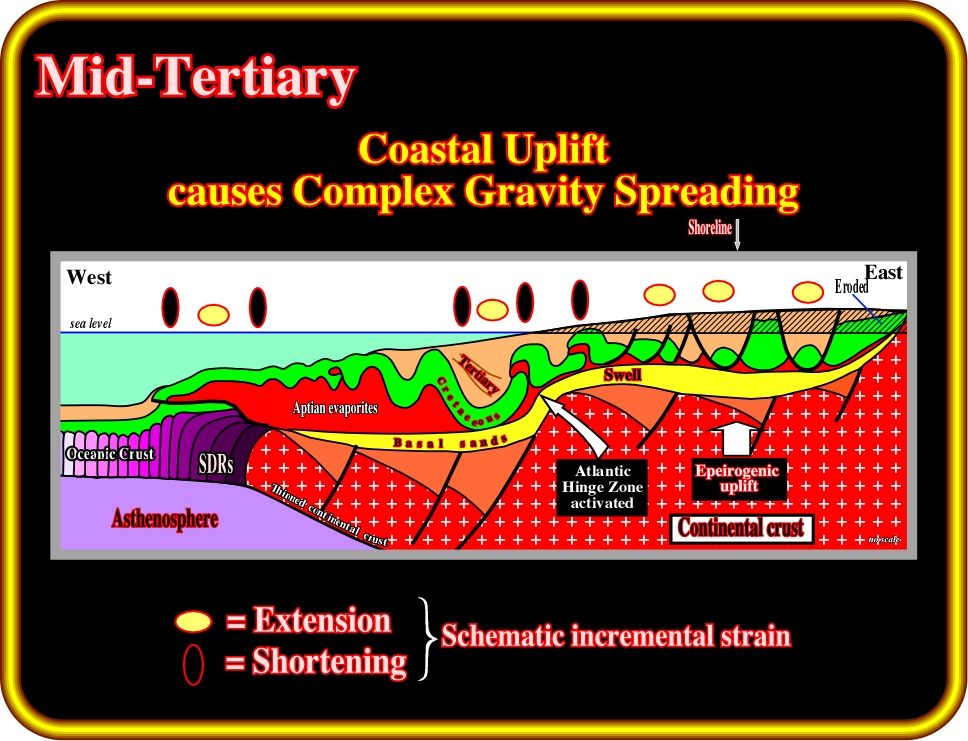
Plate 11- In the Oligocene, the Angolan margin was destabilized by major epeirogenic uplift. This uplift caused renewed gravity spreading in a complex pattern. Uplift of 2 to 3 km was concentrated in the onshore Kwanza Basin, which was formerly a greatly subsiding sag. This uplift provided the surface slope, which caused major rafting landward of the gentle swell. The seaward limit of uplift was the Atlantic Hinge Zone, represented by one or more abrupt steps or ramps in the base of salt. Erosion of the uplifted onshore Kwanza Basin and its Precambrian hinterland shed vast volumes of Neogene clastic sediments, forming the regressive Neogene turbidite systems. Progradation of the shelf edge loaded the Aptian salt and squeezed it basinwards, which inflated the autochthonous salt plateau and caused allochthonous salt to extrude basinward beyond the original salt basin. Gravity spreading was superposed on previously deformed sediments and salt structures. Thus the resulting strains were complexly mixed, as shown schematically above.
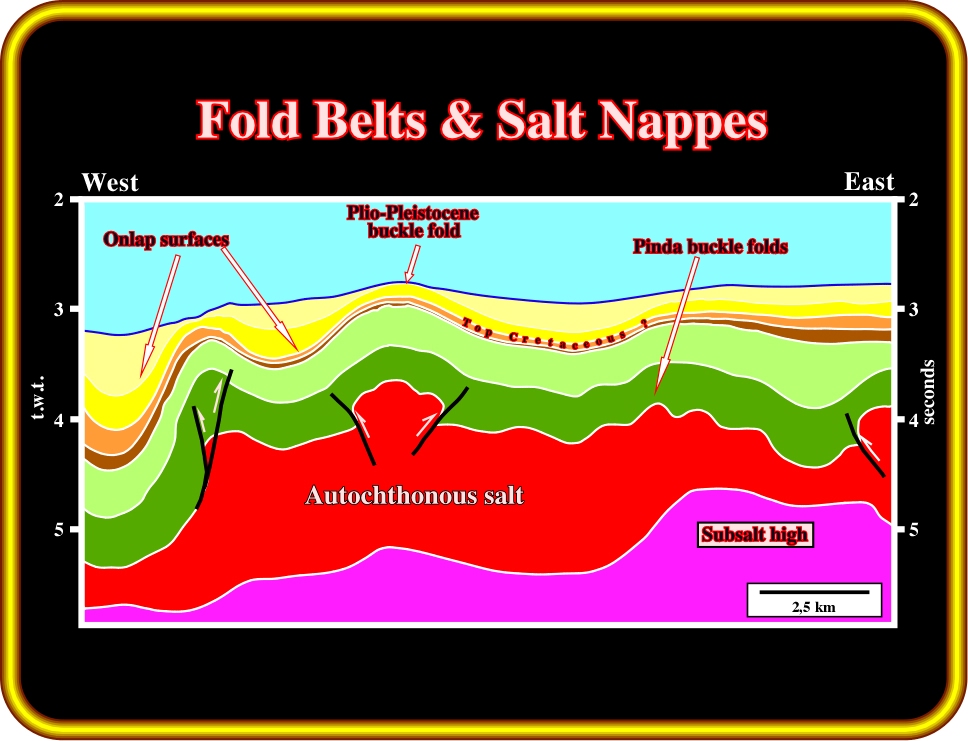
Plate 12- Fold belts are the classic structural style associated with contraction. Fold belts are the most distinctive form of contraction, but they account for the smallest amount of shortening. The Angola fold belt detaches on tectonically thickened salt averaging 4-6 km thick. It is overlying allochthonous salt thickened by thrusting. As illustrated here, the Angola fold belt contains beautiful examples of effect of layer thickness on buckling wavelength. Small folds with narrow wavelengths formed over a broad area when the Albian overburden was only a few 100 m thick. As illustrated on this line, the crinkles die out upward as growth folds, as overburden thickened. After long period of stability, much later in Plio-Pleistocene, the thick overburden buckled on wide wavelength.
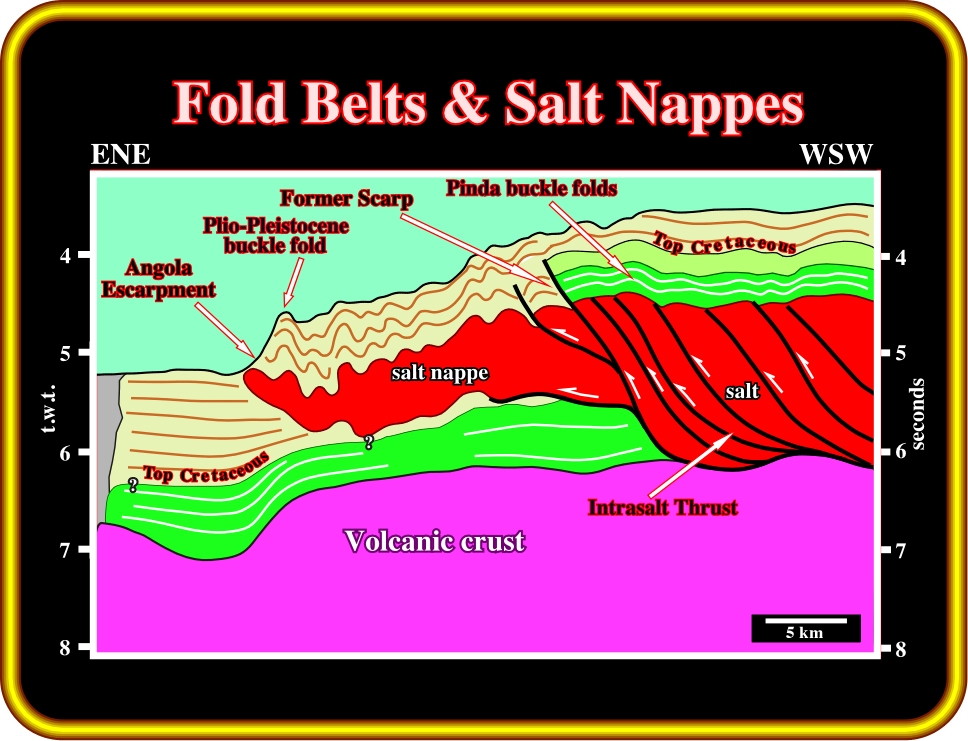
Plate 13- Here, as in similar fold belts, such as Perdido fold belt in the deep offshore of the Gulf of Mexico, onlap surfaces on anticlines indicate that buckling began abruptly. Salt nappes, as illustrated on this line, are also capable of absorbing large amounts of shortening for two reasons: 1) Salt nappes are often very large, and 2) Shortening requires little work because any increase in gravity potential is relatively small.

Plate 14- Two types of contractional structures are thought to exist at the basinward limit of the Aptian salt basin: 1) Intrasalt Thrusts: landward-dipping oblique reflectors within the salt suggest a basinward-verging stack of thrust imbricates. The intrasalt reflectors are tough to represent tectonically interleaved slices of evaporites an non-evaporite rocks. This tectonic thickening resulted from basinward squeezing of evaporites and interbedded strata from beneath the prograding sedimentary loading. The thickened salt is inferred to be separated from the mildly folded and faulted passive roof. 2) Salt Nappe: At the basinward limit of the Aptian salt basin is a fringe of allochthonous salt covered by Cretaceous and condensed Tertiary succession. Equivalent strata may extend beneath the allochthonous salt, although this is difficult to establish because of the degraded seismic imaging below the salt. If strata are, in fact, duplicated above and below the allochthonous salt, then the roof strata must have been carried seaward as a thrust nappe riding on the allochthonous salt nappe.
to continue press
next
Send E-mail to carloscramez@gmail.com with questions or comments about this conference.
Copyright © 2006 CCramez
Last modification:
August, 2014